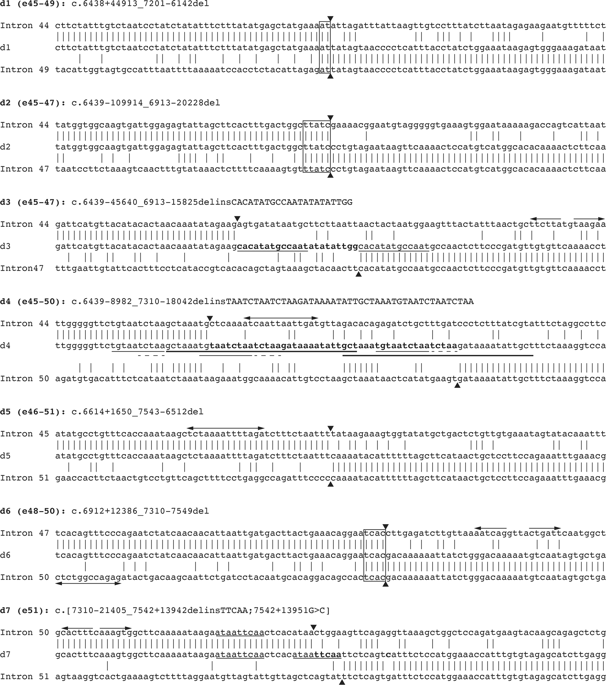Human Genome Variation Pub Date : 2019-08-22 , DOI: 10.1038/s41439-019-0070-x Niall P. Keegan , Steve D. Wilton , Sue Fletcher

|
Duchenne muscular dystrophy is an inherited muscle wasting disease with severe symptoms and onset in early childhood. Duchenne muscular dystrophy is caused by loss-of-function mutations, most commonly deletions, within the DMD gene. Characterizing the junction points of large genomic deletions facilitates a more detailed model of the origins of these mutations and allows for a greater understanding of phenotypic variations associated with particular genotypes, potentially providing insights into the deletion mechanism. Here, we report sequencing of breakpoint junctions for seven patients with intragenic, whole-exon DMD deletions. Of the seven junction sequences identified, we found one instance of a “clean” break, three instances of microhomology (2–5 bp) at the junction site, and three complex rearrangements involving local sequences. Bioinformatics analysis of the upstream and downstream breakpoint regions revealed a possible role of short inverted repeats in the initiation of some of these deletion events.
中文翻译:

七个DMD缺失突变的断点连接特征
杜兴氏肌营养不良症是一种遗传性的肌肉萎缩性疾病,具有严重的症状,并在儿童早期发作。Duchenne肌营养不良症是由DMD基因内的功能丧失突变(最常见的是缺失)引起的。表征大基因组缺失的结合点有助于更详细地描述这些突变的起源,并允许对与特定基因型相关的表型变异有更深入的了解,从而有可能提供对缺失机制的深入了解。在这里,我们报告了7位基因内全外显子DMD患者断点连接的测序删除。在确定的七个连接序列中,我们发现了一个“干净”断裂的实例,在连接位点的三个微同源性实例(2–5 bp),以及三个涉及局部序列的复杂重排。上游和下游断点区域的生物信息学分析表明,短的反向重复序列在某些此类缺失事件的起始中可能发挥作用。



























 京公网安备 11010802027423号
京公网安备 11010802027423号